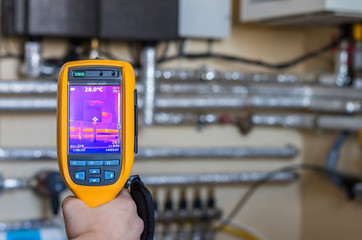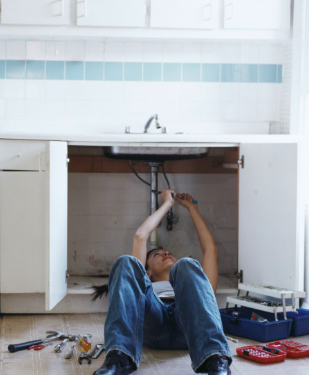Plumbing is the infrastructure that distributes water, gas, and waste in residential and commercial buildings. Plumbers are responsible for ensuring these systems are functioning properly, efficiently, and safely.
This trade requires many hard and soft skills. Plumbers must be comfortable working with tools, navigating tight spaces, and solving complicated problems. Visit https://www.castlerockplumbingllc.com/ to learn more.
The water supply is the main line that transfers fresh, clean water to essential home fixtures like showers, toilets and sinks. A plumber can professionally install, repair or maintain the supply lines in your home to ensure the proper function of this important plumbing feature. Learning more about the basics of plumbing supplies can help homeowners detect problems, accurately describe them to contractors over the phone and understand how to competently deal with them.
Depending on the location, a home’s water supply system can be municipal or private. Municipal water systems are supplied by public water companies and serve a large area or a number of towns. Private water supply systems may be supplied by individual wells, ground and surface water sources or treated wastewater.
Once the fresh, clean water leaves its source, it travels through a series of pipes to reach your home. These water lines are typically made of copper, CPVC or ABS plastic piping. Each pipe has a specific thickness and diameter that dictates its use in the home’s water system. The piping is usually sized according to the governing plumbing code, which provides a Water Supply Fixture Units (WSFU) value for each fixture type connected to that pipe. These values are then translated to gallons per minute (GPM) to size the appropriate piping for probable peak demand.
These water lines are highly pressurized, meaning they can be prone to bursting and flooding if the pipes become damaged or corroded. The pipes also need to be kept in pristine condition, since they can contain contaminants that pose health risks. For example, hard water can cause a buildup of limescale that reduces the pipe’s diameter and decreases water pressure.
Proper design of a residential or commercial building’s water-distribution system can minimize both installation and maintenance costs. This can be accomplished by using water meters to monitor usage and determining how much water is required at any given time. It is also important to consider the possibility of a future need to expand the water-distribution system. This can be done by drilling new wells, interconnecting the existing system with other nearby systems that have adequate supplies or by installing a water storage tank to provide sufficient capacity for future needs.
Drainage
A plumbing drainage system is responsible for removing wastewater, waste and dirt. It uses gravity to drain the water through pipes to the sewer line or septic tank. This reduces health hazards and environmental pollution caused by improper waste disposal. The drainage system also prevents sewage from entering the living space of a building. This ensures the safety of occupants and protects the property from damage and structural integrity issues.
The plumbing drainage system consists of the pipes that carry wastewater and waste away from individual fixtures in your home. It can be made from a variety of materials, including copper, steel and plastic. The drain pipes in your home are usually a minimum of six inches in diameter. They are often sloped at a one-half inch per foot pitch toward the house sewer to allow for proper scouring action and to help keep debris from depositing in the drain.
Drainage systems also include a system of venting to keep air pressure from building up in the drain pipes and causing backflow. This is important because it can result in suction entrapment, which can be dangerous for children and the elderly. In addition, it can lead to the contamination of potable water supplies.
In many cases, the drainage system also includes a sewage ejector pump or sump pump to lift waste to the level of the main house sewer. The pumps can also be used to evacuate flooded basements.
It is important to understand the differences between a sanitary drain pipe and a waste drain pipe. The former carries only wastewater, while the latter carries waste and dirt.
Sanitary drain pipes are typically a minimum of six inches in diameter and made from various materials, such as cast iron, vitrified clay or plastic. The drain pipes connect to the fixture drains through a trap, which is a curved section that creates a seal around the drain opening. The traps prevent waste odors and sewer gases from entering the living space of a home.
A house drain is the lowest portion of a drainage system and carries waste and dirty water from the toilets, showers, bathtubs and sinks to the main sewer line or septic tank. The house drain is usually located within three feet of the foundation wall of a building. It is also called a building sewer.
Ventilation
The ventilation system is one of the most important parts of a plumbing system. It regulates air pressure in drain pipes to prevent negative pressure conditions that could impede waste flow, leading to clogs and other problems. It also allows sewer gases to escape from the system to prevent odors inside the home.
Plumbing vents connect to drain pipes and extend upward through the roof, bringing fresh air into the plumbing system to balance the atmospheric pressure of the pipes. Without these vents, negative pressure can build in the drain lines, creating a vacuum effect that could slow or even stop wastewater flow down them. It can also cause sewage to back up into sinks, tubs, and toilets. Vents create an opening in the roof to let air in to prevent these issues, and they also ensure that the water-trap seals on fixtures like sinks and toilets remain filled with water.
The main vent pipe is connected vertically to the home’s primary sewer drain line that exits through the house. It extends through the roof to outside air, and smaller branch vent lines are installed to tie in with this stack at key positions behind each draining fixture, such as sinks, tubs, and toilets. Each vent pipe terminates outdoors to the open air by means of a non-return valve.
A non-return valve is a device that closes automatically by gravity when the positive pressure in the plumbing system returns to normal. These devices are required by plumbing codes to be installed in the lowest portion of a vent stack where they can easily be reached for maintenance and testing.
Signs of an improperly functioning ventilation system include gurgling noises coming from sinks, tubs, and toilets when they empty. Foul sewer gas odors in the home and water trap seals that dry out are other indicators of poor ventilation. To avoid these issues, consult a professional plumber about installing or upgrading your plumbing ventilation system. A well-functioning ventilation system can help keep your plumbing running smoothly for years to come. Contact us at The Climate Master if you have any questions about ventilation or need any plumbing repairs.
Gas
The gas supply pipes deliver fuel to your gas appliances so you can cook, heat your home, and more. These pipes, whether underground or in the air above ground, require careful installation and routine inspections to prevent dangerous leaks. Professional plumbers know how to locate and repair even the smallest leaks to ensure your safety and comply with all local regulations and standards.
Leaks can occur anywhere along the line, but some are more hazardous than others. For example, underground piping can develop leaks due to corrosion or soil movement [12]. The most dangerous leaks occur around areas where a gas line enters a building. Professional plumbers inspect these transition points regularly to identify and repair leaks as quickly as possible.
Professional plumbers use advanced tools to pinpoint leak locations in a gas line. Modern electronic leak detectors use heated tin oxide sensors to detect even minimal gas concentrations in the air [1]. These devices can also monitor for vibration and sound, making them effective at finding hard-to-find leaks.
In addition to detecting gas leaks, professional plumbers can also install or replace a new gas line. They’ll assess the needs of your household and select the right materials for your gas line. This may include copper, black iron, or corrugated stainless steel tubing (CSST).
Pipe materials are chosen based on a number of factors including the type of gas, installation environment, and local regulations. For example, copper is preferred for its durability and resistance to corrosion but may not be suitable for certain types of gas. Black iron is less expensive but is prone to rust over time and requires periodic maintenance. CSST offers the benefits of flexibility and ease of installation, but it must be installed by a licensed gas technician.
During the installation process, professionals clear the work area and mark the location of existing utilities to avoid damaging them. Then they dig a trench to the proper depth and width, depending on local regulations and the type of line being used. Finally, they lay the line and connect it to the existing pipes using the appropriate fittings. They seal and test the lines before backfilling the trench to ensure there are no leaks.


